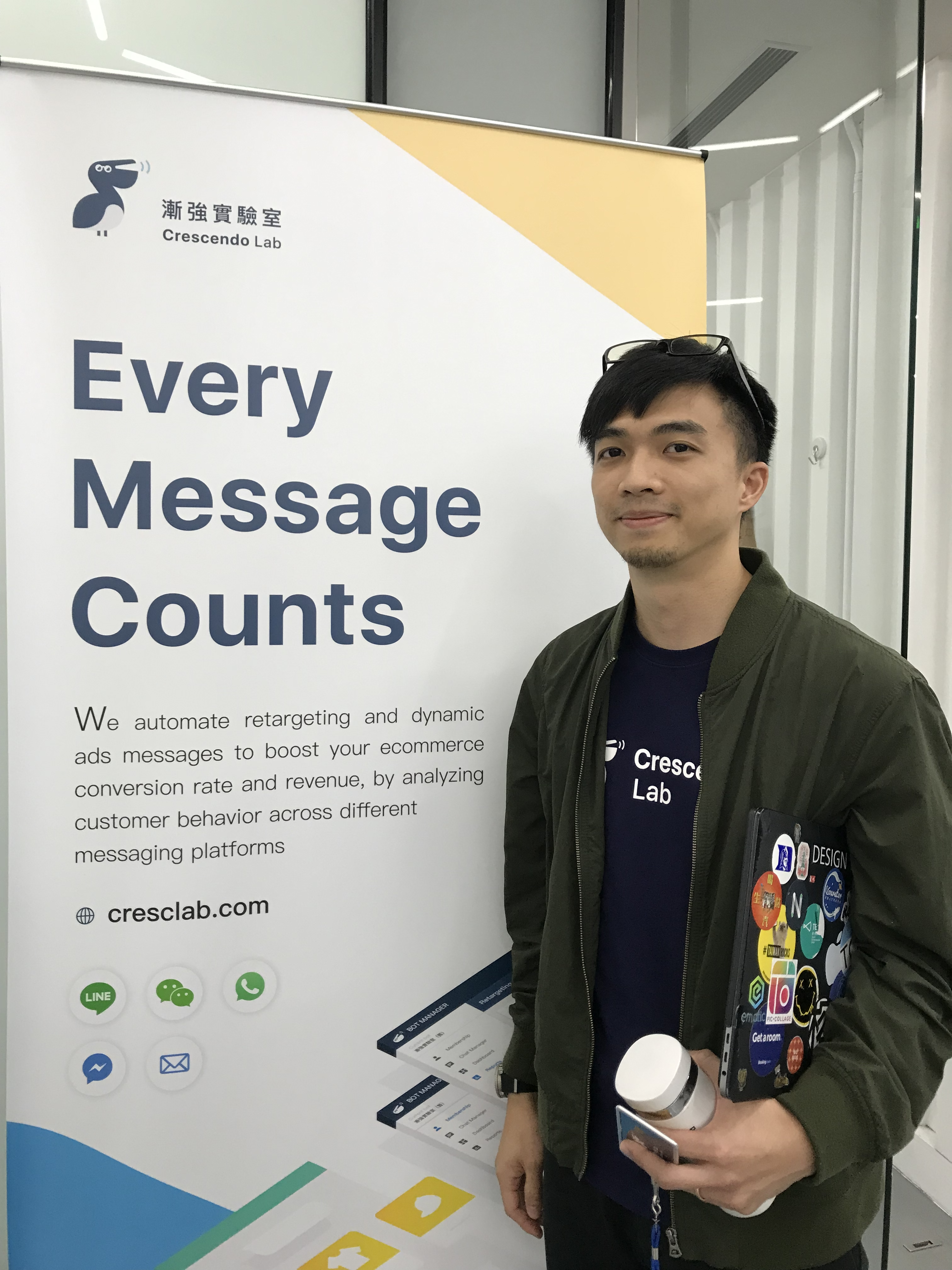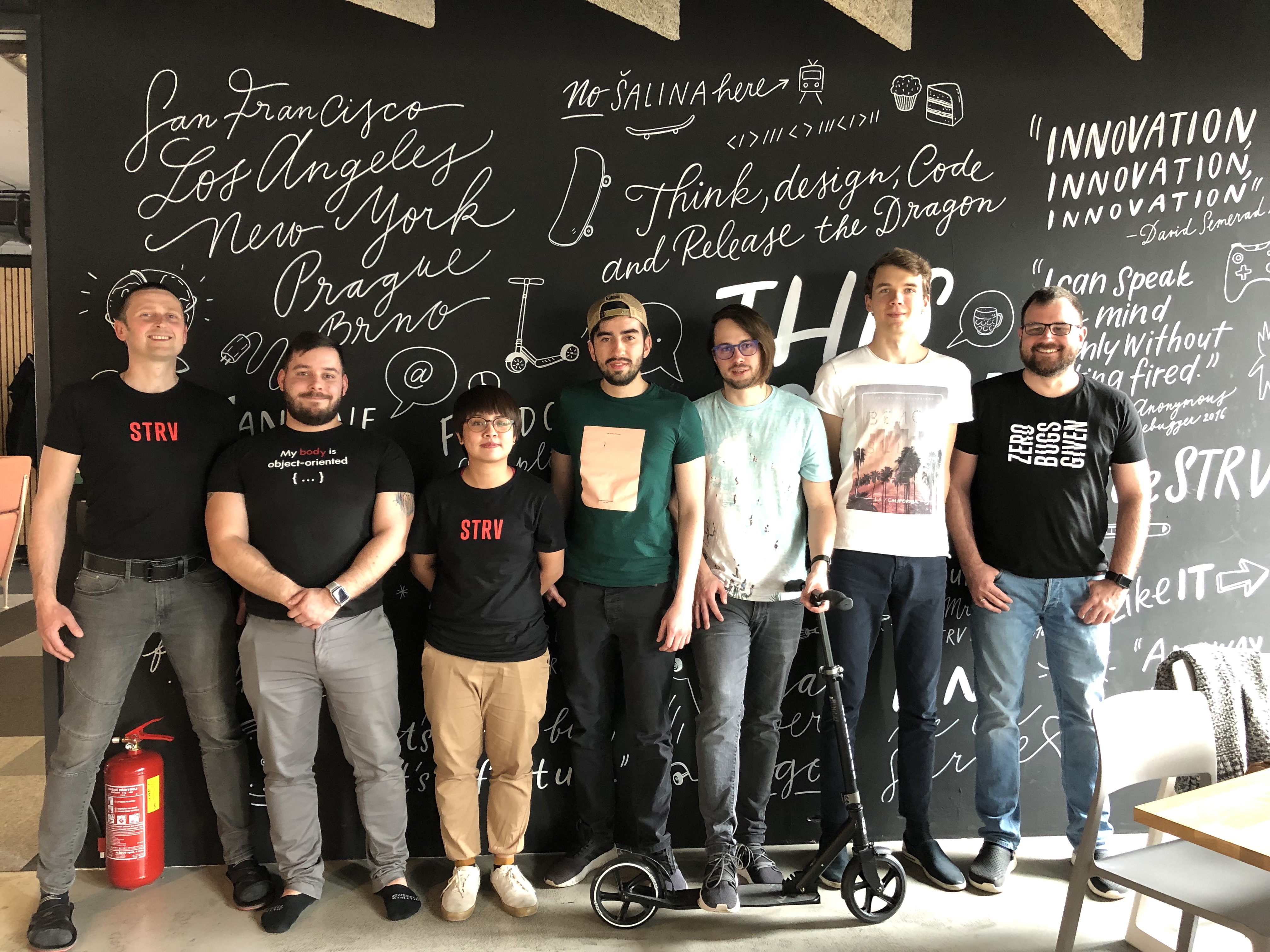
Enid Tian, Head of AppWorks School (田育欣 / 之初學校校長)
Team AppWorks 原生成員,2011 年起以實習身份加入,畢業後升格為投資分析師,而後轉任 AppWorks School 校長。台大財金系畢,輔 AIESEC & 國標系。
隨著數位浪潮、Mobile Internet 深入每個人的生活,軟體服務產業正在快速崛起,軟體工程師可說是當今最炙手可熱的人才。但由於長期以來,在台灣以科技製造為主流的產業結構下,軟體人才大多投入硬體產業服務,各界對軟體工程師的職涯發展,較少關注與探討。
AppWorks School 過去三年來,持續提供免費、實作導向、密集培訓的課程,幫助非科班出身的年輕人,轉職成為軟體工程師。至今結訓 的 106 位校友中,已有 91 位投入軟體領域,加入如 91APP、KKBOX、Gogoro、PicCollage、WeMo Scotter 等網路公司,後續不乏被拔擢為 Team Leader 的案例,也有人走向海外工作,甚至有人走上創業這條路。
今天我們挑選三位校友的故事與外界分享,希望幫助各界對軟體程式有興趣的人,看見更多具備軟體開發能力的職涯可能:
案例 1:兼備技術、商業思維與整合溝通,兩年內晉升新創 Backend 團隊負責人
從新進人員升遷為部門主管,在大企業裡,可能要花至少 3-5 年時間,才有機會展露頭角;但以快速成長的軟體企業來說,舞台很大、機會很多,軟體工程師若是能展現領導潛力,可能在 2-3 年就被拔擢為要角。
AppWorks School 第一屆校友張瑋康,就是一例,從 AppWorks School 畢業後,靠著自己持續自學與努力,以不到兩年的時間,就成為 CHOCO TV 的 Backend 團隊負責人。

張瑋康大學唸的是商管科系,卻總嚮往電腦與網路的世界,曾自己嘗試 VM/VPS 架設與運營網站、輔修資工系課程、學習電腦網路基礎知識,而為了更貼近結業界實務,他選擇在服完兵役後申請加入 AppWorks School。
在 350 個申請者、競爭相當激烈的第一屆 iOS Class 入學申請中,他是少數談到程式與網路,眼睛會閃閃發亮的人,而期盼找到軟體技術落實在商業應用上強烈動機,也相當符合許多網路新創公司的徵才條件,因此成為 AppWorks School 的學員之一。
在 AppWorks School 期間,張瑋康學習的是 iOS App 開發,並在結業後加入一個新創團隊,擔任 iOS Developer 的工作。但他仍不滿足於此,在工作之餘持續學習網路與雲端伺服器等後端開發知識,接案與知名 IG 部落客實作出一款「午餐吃神馬」的 LINE 聊天機器人,上線不到 24 小時間,就累計有約 3,000 人次使用,更也因為這個後端作品,讓他受到巧克科技新媒體的青睞,拿到後端工程師的 Offer。
加入巧克科技新媒體後,張瑋康的壓力才真正展開了,因為當時巧克科技新媒體旗下主要營運的產品為 CHOCO TV,在後端開發者人力有限的狀況下,要負擔來自 iOS、Android 與 Front-end 其他開發人員的需求,並承擔上百萬月活躍用戶的觀賞體驗,這是相當具挑戰的任務。但他並沒有把龐大的工作量視為負擔,反而視為絕佳的成長機會,因此當時除了每天工作 8-9 個小時外,下班後還會廣泛閱讀技術文件,將 Amazon 雲端服務 (AWS) 的白皮書翻得透徹,最終在產品使用者越來越多,後端伺服器一次一次突破流量乘載極限下,自己的實力也跟著不斷成長。這樣積極的投入與快速進步,很快地引起主管們的注意與肯定,而他更因為出色的溝通、協作能力,被拔擢為 Backend 團隊負責人,帶領其他技術年資更長的後端開發同事。
張瑋康的直屬主管、也是巧克科技新媒體的共同創辦人翁瑞庭形容:「 Wei (張瑋康的英文名字) 對於任何挑戰皆充滿熱情,亦會利用下班時間加強自身不足處,於短時間內不斷成長,這樣的人才,正是處在快速變動環境下的新創團隊所需要。從 Wei 身上,我依稀看到了自己的影子。」
接任 Backend 團隊負責人後,張瑋康很快又面臨到公司的重大轉變,LINE 投資巧克科技新媒體,並將 CHOCO TV 整併為 LINE TV。這意味著會有更龐大的用戶加入使用平台,後端架構是否能乘載又是另一個重大的挑戰,所幸有先前打下的扎實基礎,以及開發同事們全力協助,整個導入專案於去年底順利完成。
回首這段歷程,張瑋康對想踏入軟體領域的新人說:「現在缺工程師,更缺同時具有技術深度、商業創造力、溝通整合能力的人才。如果對於軟體工程師職涯有興趣的朋友,在培養技術能力之餘,也可以同時思考目前日新月異的產業與技術對於公司、商業與使用者能夠帶來什麼價值、解決什麼問題,並進而在工作的日常上發揮影響力。」
案例 2:投入網路創業,兩年內成長至 14 人團隊,累積 40 家企業客戶
對於想投入創業的年輕人來說,軟體服務創業可說是最輕資本、風險最低的一條路,一台電腦就可以開始動手。即使在團隊成長過程中,個人角色要從技術開發轉向管理營運,但因為擁有技術背景,在團隊溝通與領導上,也能起到相當大的效益。
AppWorks School 第二屆 iOS Class 的校友黃紹航,與好友薛覲共同創辦漸強實驗室,提供 LINE 廣告與訊息優化解決方案,兩年內累積 40 家企業客戶。

黃紹航大學主修工業工程與管理,是在投入產品設計領域,以 UX Product Manager 的身份,參與過 IoT 產品開發的工作後,才興起轉換跑道的念頭,想要往能夠更快速、更直接面對使用者的軟體領域發展。在猶豫自己到底要先成為軟體工程師,還是直接投入網路創業下,他選擇申請 AppWorks School 這個可以扎實學習軟體開發,又最接近網路新創產業的地方,希望在半年內快速累積網路與軟體產業的知識。
抱著明確的目標,黃紹航在課程中,非常勤於做筆記,將 AppWorks School 邀請來每一位講者的分享內容,都條理分明的記下,更善於消化資訊後提出更深的討論,正是如此認真又具有洞察力的特質,吸引了同班同學謹嘉,兩人決定在結業第一時間便一起創業。
創業說起來很容易,兩個人卻一開始就碰到發想創業題目的問題,找不到兩個人都有熱情想投入的題目。剛好在朋友薛覲的介紹下,開啟了「社區阿伯」這個 LINE Bot 專案,開發 LINE 機器人來做社區管理。無奈由於第一階段開發告一段落後,客戶無法立即投入更多資源,使得團隊看起來沒有發展的可能,于謹嘉也因為個人考量決定離開,這條創業路看起來又蒙上了一層灰,前途晦澀不明。
但黃紹航沒有因此放棄,他決定和薛覲繼續承接專案、開發其他社區管理的需求,運用半年的時間,一邊找尋願意全職加入的工程師夥伴,直到在 2017 年中,才正式成立漸強實驗室 ,由薛覲擔任商務開發,黃紹航擔任產品管理的角色,三個人的團隊,將本來的社區管理 LINE Bot 架構,化成可提供品牌商家創建推播廣告的模板服務,並正式成立「漸強實驗室」
在找了幾家 Pilot 客戶後,他們發現除了廣告模板外,商家更需要的是訊息所觸發的行為追蹤與成效評估,因此推出第三代產品,讓品牌主可以更有效追蹤每一則 LINE 推播的廣告成效,並自動化地推送與使用者相關的訊息,才成功簽下如中國信託銀行、淘寶網、SkyScanner 等大品牌客戶,並快速推展至 40 家企業客戶使用,公司也在短短一年間從 3 人成長到 14 人的規模。
回顧這兩年,黃紹航認為在 AppWorks School 受到的軟體開發訓練,讓漸強實驗室即使沒有 CTO,他也能勝任規劃產品藍圖、帶領開發團隊的工作,能夠與工程師有效的溝通;在 AppWorks School 與許多新創團隊建立的連結,後續也在創業路上有所幫助。
對於想加入軟體創業的年輕人,他分享:「原以為登記公司、簽下第一個客戶、拿到天使投資等事件,就是代表成功關鍵的里程碑。但其實每一天都是關鍵的一天,每個里程碑背後代表著更多的責任,將沒有停下來的一天,卻也非常充實。如果你也認同這樣的體悟,歡迎踏上軟體創業這條路。」
案例 3:憑技術力走出台灣,遠赴捷克挑戰海外工作
軟體浪潮不只在台灣發生,全世界各地都需要軟體工程師來創造新的服務與改變,程式開發技能這項「可以移動的專業」,正適合想要到世界舞台歷練的人。AppWorks School 第五屆 iOS Class 的校友李宜芳 (下圖左三),則選擇前往捷克挑戰。

李宜芳是位熱血的高雄人,總是滿臉笑容像南台灣的太陽。因為熱愛動物,她大學主修的是動物科學,卻在畢業後於醫院擔任研究助理期間,面對得親自操作動物實驗的工作,內心開始產生強烈的矛盾與衝突。在工作一年半後,她決定重回校園研讀生物資訊研究所,轉向資工領域的研究,她在軟體領域的起點,是從抱著一本外文課本,學習 C++ 開始。隨後在碩士論文的需求下,開始自學影像處理與機器學習,最終完成用醫學影像預測大腸癌化程度的結果。
在完成碩士論文後,她前往捷克 Brno University of Technology 擔任交換學生,並在交換期間遊歷歐洲,感受到世界廣大,希望讓自己擁有更多海外經歷,因此心生想要出國工作的念頭,所以就在當地開始嘗試投履歷、找工作。
即使有碩士論文的專題經驗,但當時的求職並不順利。她說:「可能是因為不是本科系畢業吧?或是也沒有真正的軟體經歷,像 Web 或 App 作品。」她開始找尋其他可能性,發現到 iOS App 開發其實不在資工系的必修範圍,而且又有較高的學習門檻 (需自備 Mac 筆電與 iPhone),因此市場上的人才供給較少,所以她決定學習 iOS 開發,而在找尋相關學習資源下,發現了 AppWorks School 就毅然提出申請,加入當時女性限定的第五屆 iOS Class。
有著強烈想要出國工作的動機,也害怕自己會隨著年紀 (當時 27 歲) 增長而降低出國可能性,李宜芳非常積極利用在 AppWorks School 四個月的時間,開學一週後索性就帶了一條棉被就住在 AppWorks 附近,以便晚上可以 Coding 到很晚,省下不少交通時間。而這樣的努力,也轉換成實際的學習成果,帶著精緻的作品 Hooman Talk,她在 AppWorks School 安排的工作媒合活動下,就收到了七家合作企業的面試邀請。
最後她選擇回到南部,相繼加入 Prenetics 與 KKSTREAM 等軟體公司,但前往海外工作的心願一直沒忘。總算在 2018 年 9 月,收到來自捷克的大型專案公司 STRV 的 Offer,並於 12 月辦妥簽證後,歷經了 16 個小時的飛行抵達布拉格,才正式開始這趟海外工作之旅。
才一上工,她就明顯感受到新的工作環境比台灣更自由、更彈性,沒有上下班時間的限制,但每位同事都非常自律,即使公司無限供應啤酒,但沒有任何人會在工作時間喝,專案開發上井井有條。她說:「這裡的 Code review 很嚴格,常常寫完一段程式碼,提交後會收到 50-60 個 Comment,都是同事們建議怎麼寫會更好。」即使改變程式寫法不影響產品的畫面或功能,但這些建議背後,代表的是軟體人對程式碼品質的堅持。除此之外,還有不時和資深工程師 Pair Programming 的機會,能近距離學習他們的開發方式,讓她加速成長。公司也相當鼓勵工程師參與社群聚會,還會輔導工程師上 Conference 演講,真切關心每個人的成長。
在經歷幾個月的洗禮後,對於也嚮往海外工作的軟體開發者,李宜芳認為:「若英文有一定的基礎,技術經歷不一定要非常資深,每個人都可以勇敢挑戰看看,有機會就出發吧!」
【想要成為軟體工程師?歡迎免費加入 AppWorks School】
Photo by Jonathan Klok on Unsplash













